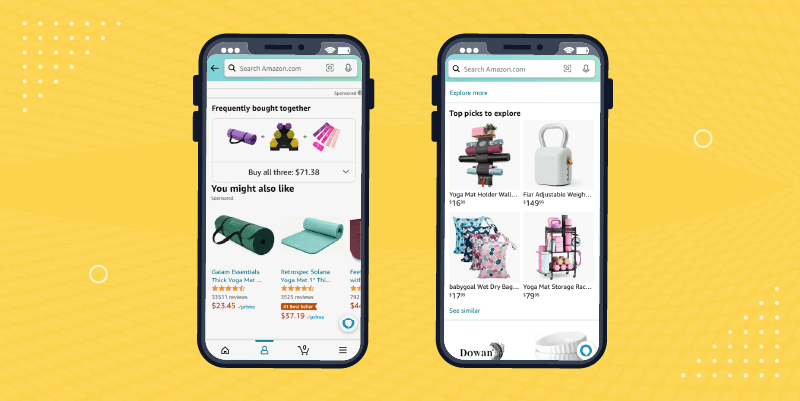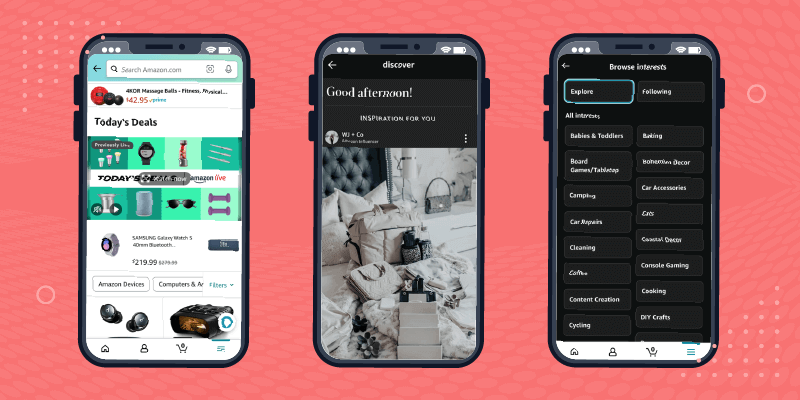User segmentation is a powerful tool that allows you to slice and dice your user base into distinct groups based on specific characteristics or behaviors. Think of it like a chef preparing a delectable meal, where each ingredient is carefully selected to create a perfectly balanced flavor. By leveraging user segmentation, you can tailor your messaging and experiences to each group’s unique tastes, driving personalization and increasing user engagement.
For example, imagine you have a fitness app that caters to both beginners and advanced users. By segmenting your users into these two groups, you can create personalized onboarding experiences that cater to each group’s specific needs. For beginners, you might provide step-by-step instructions and beginner-friendly workouts, while advanced users might receive more challenging exercises and access to specialized trainers.
As the market continues to evolve and as customers demand an improved experience, user segmentation is a powerful tool that can help you create tailored experiences your users demand. By leveraging this strategy, you can increase engagement, drive conversions, and ultimately provide a better user experience. And here’s how:
Tailored, More Relevant Content
User segmentation allows you to create personalized content that is relevant to specific user segments. For example, you can conduct demographic segmentation or psychographic segmentation or segment its users based on their interests, or past behaviors, and then create targeted content that speaks to the unique needs and preferences of each segment.
User segmentation also allows you to provide relevant recommendations to users based on their preferences, past behaviors, or browsing history. For example, an ecommerce website can segment users based on their purchase history and provide personalized product recommendations that are tailored to each user’s interests and needs. This can increase user engagement as it helps users discover relevant products or services they may not have otherwise found, leading to increased conversion rates and customer loyalty.
Netflix Wins the Streaming Wars
One example of a company that leveraged user segmentation to create personalized content is Netflix. They use a combination of user data and analytics to segment users into different categories based on viewing habits, location, and other factors. A science fiction fan will be given more science fiction content. A Spanish content viewer will have more Spanish-language content recommended to them.
Additionally, Netflix creates personalized trailers and promotional materials for each user segment. If a user frequently watches romantic comedies, they might receive a personalized trailer for a new romantic comedy movie that is coming to the platform.
By leveraging user segmentation, Netflix is able to create a more personalized experience for each viewer, which can lead to increased engagement and retention.

Improved User Experience
Personalization through user segmentation can greatly improve the overall user experience. By understanding the specific needs, preferences, and behaviors of different user segments, you can optimize their websites, apps, or other digital channels to better meet those needs.
This can include customizing the user interface, navigation, and interactions based on different segments, resulting in a more intuitive and enjoyable experience for users. A seamless and personalized user experience can greatly increase user engagement and encourage users to spend more time interacting with a business’s digital properties.
Take a Cue From Amazon
Amazon uses user segmentation based on browsing history, past purchases, and demographic data to personalize product recommendations and promotions for each user. A user who has previously purchased books on yoga or exercise will get yoga mats or exercise products recommended to them. Or a new parent will receive diaper and baby wipe recommendations.

Amazon offers a variety of ways to find new items. In addition to suggesting related products, you can see daily deals, shop by category or interest, see what the “Explore” option has that might entice you, and follow certain “Influencers” whose tastes match yours.

By tailoring product recommendations and promotions to specific user groups, Amazon creates a more personalized experience for each user, which can improve overall user experience by making it easier for them to find products that are relevant to their interests and needs. As a result, users are more likely to stay on the platform longer, make more purchases, and become repeat customers, which can ultimately lead to increased revenue and profitability for the company.
Targeted Communication
User segmentation enables you to send targeted and personalized communication to different user segments. This can include email marketing campaigns, push notifications, or other forms of communication that are tailored to the preferences and behaviors of specific user segments.
By delivering relevant and timely messages to users, you can increase user engagement as users are more likely to open, read, and act on messages that are personalized and relevant to their interests and needs.
How Airbnb Upended Lodging
Airbnb uses analytics to segment their users based on various factors such as location, booking history, and preferences. A user who frequently books accommodations in Europe might receive discounted rates on European destinations.
Similarly, Airbnb might send targeted communication to users who have previously abandoned a booking or have not booked anything in a while to entice them back to the platform.
By using user segmentation to send targeted and personalized communication, Airbnb creates a more engaging and relevant experience for each user, which leads to increased engagement, bookings, and revenue for the company.
Loyalty Programs
User segmentation can also be used to create personalized customer loyalty programs that reward users for their engagement and loyalty. By segmenting users based on their past behaviors, you can create targeted loyalty programs that offer personalized incentives, discounts, or rewards to users who have shown high levels of engagement or loyalty. This can motivate users to continue engaging with the business and increase their overall loyalty, leading to higher retention rates and repeat business.
As we can see, user segmentation is a powerful tool that drives personalization and increases user engagement. By understanding the unique needs, preferences, and behaviors of different user segments, you can create tailored content, improve user experience, provide relevant recommendations, deliver targeted communication, and create personalized loyalty programs, all of which can result in higher user engagement, increased customer satisfaction, and improved business outcomes.
Loyalty Programs Drive Beautiful Growth
Sephora uses user segmentation to personalize their loyalty program called Sephora Beauty Insider. They segment their customers based on various factors, such as purchasing behavior, frequency of purchases, and preferences. For instance, if a user frequently purchases skincare products, Sephora might offer them personalized rewards and promotions related to skincare products.
Additionally, Sephora offers tiered loyalty program benefits based on user segmentation. Members can advance to higher tiers by earning more points, which can be achieved through purchases or engagement activities such as reviews and social media shares. Higher tiers come with more benefits such as personalized experiences, exclusive access to products, and free shipping.
By using user segmentation to create personalized loyalty programs, Sephora creates a more engaging and relevant experience for each customer, which can lead to increased customer loyalty, repeat purchases, and higher revenue for the company.

Read More: What is Customer Segmentation? The Complete Guide
How CleverTap Improves User Segmentation
CleverTap offers a variety of features and capabilities that can help improve user segmentation and increase user engagement. Here are some ways our platform achieves this:
Advanced Segmentation: Create dynamic and targeted user segments based on criteria like behaviors, events, and location in order to deliver more personalized content, promotions, and messaging.
Real-time Segmentation: Segment users based on current actions and behaviors for timely and relevant messaging that will capture users’ attention at the right moment for higher engagement and conversion rates.
Behavioral Segmentation: Use behavioral segmentation to segment users based on past behaviors and interactions with your app or website.
AI-powered Segmentation: Utilize artificial intelligence and machine learning for predictive analytics that create segments based on future behaviors and preferences. Uncover hidden insights in user data for more effective targeting and increased engagement.
Omni-channel Segmentation: Segment users across multiple channels including mobile apps, websites, email, and SMS, creating consistency across all touchpoints.
Campaign Orchestration: Manage multi-channel campaigns across push notifications, in-app messages, email, SMS, and more.
CleverTap in Action: How StarQuik Gets It Done
StarQuik, an online grocery delivery service in India, partnered with to improve their customer engagement and retention rates. By using the CleverTap platform to segment customers based on their browsing and purchase history, demographics, and behavior patterns, StarQuik was able to create targeted campaigns and personalized messaging that resonated with each group.
The company also utilized our triggered messaging feature to send personalized messages to customers who abandoned their cart or showed interest in a particular product, encouraging them to complete their purchase.
The results were impressive, with StarQuik achieving a 10% increase in customer retention rates and a 20% increase in repeat orders. The company also saw a significant improvement in customer engagement, with users spending more time on the platform and making larger purchases.
One of the key factors in the success of the partnership was the use of automated segmentation. By automating the process, the StarQuik team was able to create a more efficient and effective marketing strategy that resonated with each group of customers, ultimately leading to increased customer loyalty and revenue.
Increasing User Engagement and Satisfaction, With CleverTap
Our platform was built to help companies understand, segment, and engage users in real time using context and powerful AI/ML models. Thousands of apps in over 100 countries use our solution to dramatically improve customer lifetime value (LTV) and retention. We’re confident we can do the same for your brand. See for yourself by signing up for a demo.

The User Segmentation Pocket Guide
Subharun Mukherjee 
Heads Cross-Functional Marketing.Expert in SaaS Product Marketing, CX & GTM strategies.
Free Customer Engagement Guides
Join our newsletter for actionable tips and proven strategies to grow your business and engage your customers.















































